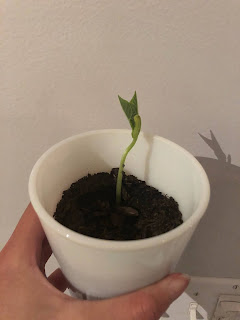Little beans
In our Food class we went over how to calculate area/volume, the nitrate cycle, abiotic and biotic factors, and what an Ecosystem is. An ecosystem is a group of abiotic and biotic factors that function together. Some examples of ecosystems that we saw this term was the aquaponics system at plant Chicago and another example of an ecosystem would be my freshman class since we are a group of biotic factors. We also learned about companion plants. We also watched a Ron Finley’s talk (ted talk) which I found very inspiring. Something that stood out in Ron Finley’s ted talk was “food is the problem and food is the solution” In Food we also read a short portion of “natural farming from Fukuoka”. I agree with most of his principles except one, no weeding by tillage or herbicides. I disagree with this because although Fukuoka claims weeds are a part of the ecosystem I personally think they are destructive and unnecessary. If we had more time and resources I would plant strawberries. I really really love strawberries and I overall think having this fruit would be fun. Another is Borage! This plant is specifically very good with strawberries and I also love the way this looks. I also like what it is used for! I would also grow spinach because I think it would be an easy crop and something that I would often eat. (they are all companion plants). Here are the volume calculations of the dirt in my tiny bean farm.
In our food class we are doing a science experiment testing plants. We have three different soils, The one in the bang cup is soil that was made for plants! Fertilized soil. The other two cups contain dirt off the street. This is very poor dirt. The glass container of dirt contains fertilizer. The one in the white cup does not contain any fertilizer at all. The “control” of the experiment is the plant we are growing. We are growing beans! Our experiment is to see which plant grows the best/faster.






Comments
Post a Comment